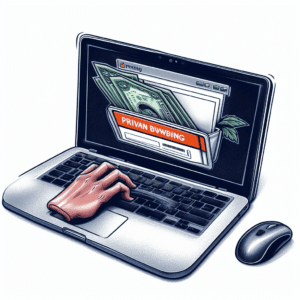What is Hacking?
Hacking is the creative application of technology to solve problems or enhance functionality, often in ways that differ from the intended use of the hardware or software. While hacking is frequently associated with unauthorized access or cybercriminal activity, the broader, technical definition encompasses a vast array of innovative techniques that leverage technology in unconventional ways. Ethical hacking, for example, involves using hacking techniques legally to strengthen security systems. Despite the common perception, only a small fraction of hackers engage in malicious activities; the majority use their skills to improve systems and find solutions.
History of Hacking
Here’s a structured summary of the History of Hacking based on the provided text:
1. Early Beginnings (Late 1870s)
- The Bell Telephone Company hired teenage boys as switchboard operators.
- These boys engaged in mischievous activities, like misdirecting calls, eavesdropping, and disconnecting phone lines.
- Although not called “hacking” at the time, it was one of the earliest instances of technology misuse, which eventually led Bell to hire only female operators.
2. 1950s: The Emergence of the Term “Hack”
- In the 1950s, “hack” referred to finding shortcuts or techniques to bypass original system functions.
- MIT model train enthusiasts, often seen as the first hackers, used old telephone equipment to control model trains.
- They innovatively manipulated the telephone system to coordinate train movements, marking the beginning of the hacker mindset.
3. Programming and Computer Hacking (1960s)
- Model train hackers began exploring campus computer systems, wanting to modify and improve existing programs.
- They created more efficient and customized versions of original programs, driven by a desire to solve problems creatively and for fun.
Results
Very Good!
Oh No!!!!
#1. What is “whacking” in the context of modern hacking?
#2. The term “hack” in the 1950s referred to which of the following?
#3. What was the main objective of “phreakers” in the 1970s?
#4. What was one of the earliest recognized incidents of technology misuse by young switchboard operators at the Bell Telephone Company?
4. 1970s: Phreaking
- “Phreakers” emerged in the 1970s, focusing on exploiting the telephone system to make free long-distance calls.
- This marked an anti-establishment phase of hacking, where individuals sought to understand and manipulate complex systems for personal benefit.
5. The Personal Computer Revolution (1980s)
- Personal computers became more accessible, enabling more people to experiment with hacking.
- Hackers used modems to connect to other computers, leading to the exploration of networks and shared systems.
- Hacker Ethic: Influenced by Stephen Levy’s book Hackers: Heroes of the Computer Revolution, hackers believed in unlimited access to information and technology for learning purposes.
6. Cybercrime and Cyber-Gangs (Late 1980s)
- A new wave of hackers sought profit rather than knowledge.
- This generation distributed pirated software, viruses, and worms, and even formed cyber-gangs to target government and corporate systems.
- Law enforcement responded by enacting anti-hacking legislation, leading to arrests and prosecutions of cybercriminals.
7. Modern Hacking: Whacking
- The latest form of hacking is “whacking,” which involves connecting to unsecured Wireless Access Points (WAPs).
- This practice grew alongside the widespread availability of Wi-Fi and continues to evolve as network technology advances.
This structured outline provides a clear view of the evolution of hacking from its early days to modern forms.







